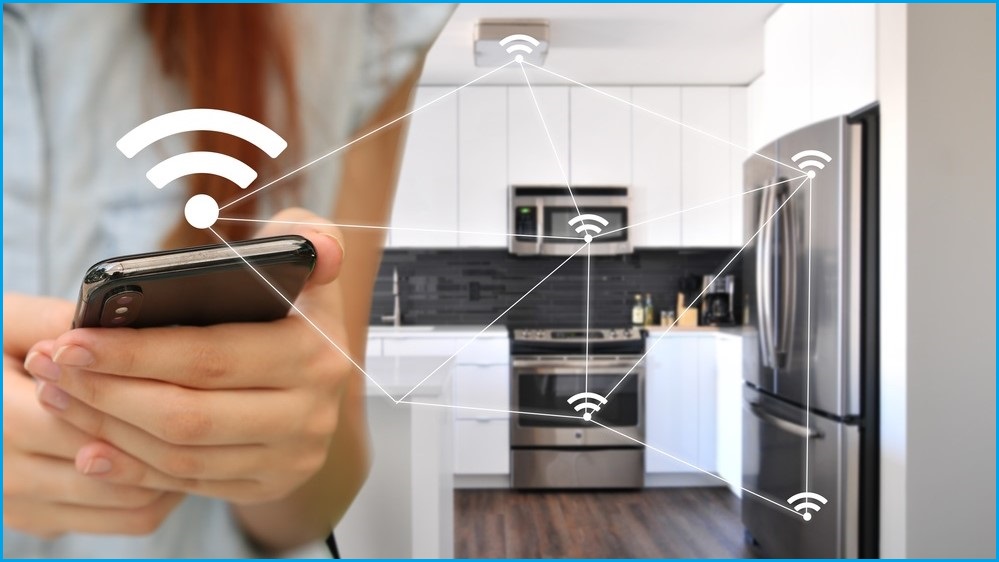With just over two months to go before Christmas, smart home device manufacturers are rushing to support a new smart-home standard that will make Internet of Things (IoT) devices simple to configure and enable them to be managed through any app.
Developed by the Connectivity Standards Alliance (CSA) and now available as version 1.0, the new Matter standard has been designed to reinvent the way that IoT devices – think smart voice assistants, appliances, TVs, doorbells, security cameras, lightbulbs, smart door locks, and the like – are set up in smart homes and offices.
Until now, a lack of industry standards has meant that each device requires a separate app from its own manufacturer, and devices aren’t very good at communicating with each other – making connecting and managing new devices a headache-inducing dance of app downloads, WiFi networks, and Bluetooth connections.
The problem was well-known as IoT emerged nearly a decade ago, but it has taken years of industry development for major players to throw their weight behind an open-source standard – which has the backing of Apple, Google, Amazon, Samsung, and more than 280 other major manufacturers – that fixes all of this by allowing compliant devices to be added to smart home or smart office ecosystems by scanning a QR code on the device.
“What started as a mission to unravel the complexities of connectivity has resulted in Matter, a single, global IP-based protocol that will fundamentally change the IoT,” CSA president and CEO Tobin Richardson said in announcing the release of the new specification.
“This release is the first step on a journey our community and the industry are taking to make the IoT more simple, secure, and valuable no matter who you are or where you live.”
Matter co-ordinates a number of technologies that are already built into contemporary IoT devices, including Low Energy Bluetooth to help nearby devices find each other; Wi-Fi to help devices communicate at high speed with each other and with cloud services; and Thread, a standard for creating in-home ‘mesh’ networks that improve the reliability of the smart-home network by helping devices work together.
Rather than relying on direct connections to the same Wi-Fi base station, mesh networks allow devices to directly connect to each other – creating what Thread Group president Vividh Siddha called “a self-healing mesh network which grows more responsive and reliable with each added device.”
Putting the T in IoT
The initial release of the standard will support connected lighting, electrical, HVAC, window shades, safety and security sensors, door locks, TVs and other media devices, and bridges – and eager manufacturers are said to be moving so quickly to have their devices tested and certified that devices could be on the market within weeks.
That will see users able to use multi-admin features enabling devices to be connected to any Matter-compliant app or device, and control every compatible device, no matter which company made it.
Apple is said to be readying support in the HomeKit features of its upcoming iOS 16.1 operating system, while operating systems and devices from Google and Amazon are also nearly ready to go.
This means that, rather than limiting yourself to buying smart-home devices that fit within a certain vendor’s ecosystem, you’ll be able to buy IoT devices based on their features and know that they’ll work out of the box – through a process as simple as connecting Bluetooth headphones to a phone is today.
Although consumers in Australia and around the world are watching their discretionary spending more carefully given current economic challenges, home automation and major appliances are continuing to show strong growth that, analyst firm GfK noted in a recent analysis of the smart-home sector, “shows the strength of a smart portfolio despite a demand deceleration and lower consumer confidence which plagues the market at large.”
Many potential customers remain unconvinced about the benefits of connected devices like smart LED lamps, GfK observed, noting that for many IoT devices “the marketing messaging has not been strong enough to overcome certain existing barriers… being able to control their lamps remotely is low down on their scale of needs.”
IoT manufacturers hope Matter will address these concerns by making it easier to connect devices – driving them towards mass-market acceptance.
Expect to see ‘Made for Matter’ or similar branding splashed across the cavalcade of new IoT devices set to be launched in the run-up to Christmas – yet existing devices are also expected to be updated to support the standard, which doesn’t necessarily replace them but enables them to communicate better.
“For something like Matter to be successful, the 300 million [IoT] systems out there must be able to continue to exist and work with it,” Mitchell Klein, executive director at IoT manufacturers’ association the Z-Wave Alliance, said at the CES 2022 consumer electronics trade show earlier this year as vendors ramped up their enthusiasm about the impeding new standard.










